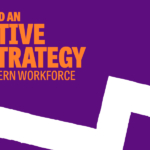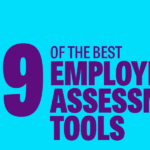With talent in short supply and 94% of employees saying they’d stay longer at companies investing in their development, learning and development has never been more critical. But while L&D budget allocation is a given, how to split that investment effectively remains open for debate.
Enter the 70/20/10 learning model: a framework that’s guided organisational development for four decades. It suggests that 70% of learning happens through on-the-job experience, 20% through social interaction, and just 10% through formal training courses.
After 40 years, does this model still serve today’s digital, hybrid workforce? This article examines its continued relevance, explores why it often fails in practice, and provides actionable guidance on making it work for your organisation.
In this article
- What is the 70/20/10 Learning and Development Model?
- Examples of Each Learning Type
- Why Modern Employees Focus on the Measurable 10%
- Why the 70/20/10 Model Doesn’t Always Work
- How to Use the 70/20/10 Model Effectively in Your Organisation
- Embed L&D Throughout the Employee Experience
- Promote Your L&D Offering Consistently
- Benchmark and Measure Success
- Is the 70/20/10 Model Still Relevant Today?
- How Let’s Talk Talent Can Support Your L&D Strategy
What is the 70/20/10 Learning and Development Model?
The 70/20/10 model originated from research conducted in the 1980s examining how successful managers actually learned and developed in their roles. The findings revealed that the vast majority of effective learning happened outside formal training environments.
The model breaks down how people develop professionally across three distinct categories. It’s important to note this is a guideline ratio, not a rigid prescription that must be followed to the letter.
The three components are:
1. 70% on-the-job training and experiential learning: The largest portion of development happens through practical, hands-on work experience where employees learn by doing.
2. 20% networking, social learning, and peer collaboration: Learning that occurs through interactions with colleagues, mentors, and professional relationships.
3. 10% formal training courses and structured resources: Traditional educational formats including workshops, online courses, and certification programmes.
Modern learners increasingly view L&D as a core part of their benefits package, rather than an optional perk. This naturally leads employers to invest heavily in the most visible element: formal training. However, a comprehensive L&D strategy recognises that courses alone won’t develop the skills needed to reach organisational objectives.
Examples of Each Learning Type
70% On-the-job learning:
- Taking on more complex or challenging projects
- Participating in mentoring programmes (as mentor or mentee)
- Coaching relationships
- Stretch assignments that push capability boundaries
- Job rotations across departments
20% Networking and social learning:
- Shadowing colleagues in different roles
- Cross-functional collaboration on projects
- Peer feedback sessions
- Communities of practice within the organisation
10% Formal training:
- Online courses and e-learning platforms
- Webinars and virtual workshops
- In-person training sessions
- Professional certifications
- External training programmes
Why Modern Employees Focus on the Measurable 10%
Formal training carries obvious appeal. It’s tangible, measurable, and looks impressive on a CV. For organisations competing in today’s talent marketplace, a comprehensive course catalogue becomes a powerful recruitment and retention selling point.
However, this overemphasis on formal training creates fundamentally imbalanced development. Employees may feel they’re not being developed in their current roles, despite 90% of genuine learning happening through daily work and relationships. This perception gap can lead to demotivation and increased attrition, even when organisations are investing significantly in L&D.
When potential candidates evaluate opportunities, they naturally gravitate toward companies offering concrete training commitments. But once hired, they need the other 90% to truly develop and progress.
Why the 70/20/10 Model Doesn’t Always Work
The model faces three fundamental implementation challenges:
1. Measurement difficulty: On-the-job and social learning are considerably harder to track and report than course completions. Without clear metrics, these elements struggle to gain executive buy-in and budget allocation.
2. Required mindset shift: The model moves accountability for development onto employees’ shoulders. This requires managers to trust their team members with greater autonomy while empowering them with the necessary tools and opportunities. For time-poor managers buried under administrative tasks, this can feel like an impossible ask.
3. The path of least resistance: Faced with these barriers, organisations default to course-heavy offerings. Both employees and employers can point to training budgets and course catalogues as evidence of development commitment, even when this represents a fraction of effective learning.
How to Use the 70/20/10 Model Effectively in Your Organisation
The model remains relevant in theory, but without an effective implementation plan, it’s merely an aspirational framework. As Jo, MD at Let’s Talk Talent, notes:
“The ratio is not a magic formula that will give you high-performing employees, nor should it be used as a stick to convince staff that you are indeed developing them.”
Creating an effective blended learning offering requires concerted effort throughout your entire business.
Embed L&D Throughout the Employee Experience
Learning must be woven into every touchpoint of the employee journey, from onboarding through to career progression and performance management. This allows development to occur regularly and organically, rather than as isolated training events.
During performance reviews: When skills gaps emerge, provide training courses alongside shadowing opportunities or internal mobility options. This allows employees to develop skills at a much deeper level through practical application.
Throughout onboarding: Include networking support so new starters gain broader understanding of the entire business and industry, not just their immediate role.
In career conversations: Create pathways for stretch assignments that challenge employees and accelerate their development through real-world problem-solving.
Promote Your L&D Offering Consistently
Your talent pool needs to know what’s available to them. Communicate development opportunities regularly and make your blended approach explicit—not just your course catalogue. Many employees remain unaware of mentoring schemes, shadowing options, or collaborative projects they could access.
Benchmark and Measure Success
Find ways to track all three learning types, even the traditionally difficult 70% and 20%. Consider:
- Skills assessments showing capability growth
- Performance metrics improvement over time
- 360-degree feedback highlighting development
- Project outcomes demonstrating applied learning
- Qualitative employee feedback on development experiences
This data helps you understand your audience, identify what resonates, and course-correct your people development strategy to better suit your talent pool.
Is the 70/20/10 Model Still Relevant Today?
Yes, but with important caveats. The model remains relevant when organisations use it as a guideline rather than a box-ticking exercise – when they embed it in their culture rather than treating it as employee-only responsibility – and bring it to life through intentional design.
It’s less relevant when applied rigidly, used to justify minimal investment, or employed to shift all development accountability onto employees without providing the infrastructure to support their growth.
The key is setting the deal with your people. Clearly communicate what they can expect from the organisation and what you need in return. This includes a comprehensive picture of all learning opportunities at their disposal, enabling informed choices about whether your business suits their development needs and how they want to progress their careers.
Modern workforces contain diverse learning styles and preferences. A one-size-fits-all approach – whether that’s 100% formal training or rigid adherence to 70/20/10 – won’t serve everyone effectively. The model works best when it guides your thinking about balance, while remaining flexible enough to adapt to your organisation’s specific needs, and your employees’ individual preferences.
Explore the many learning options available to embed the 70/20/10 principles into everything you do, creating a comprehensive learning and development support system that genuinely drives performance and retention.
How Let’s Talk Talent Can Support Your L&D Strategy
Let’s Talk Talent helps organisations design and implement effective blended learning strategies embedded throughout the employee experience. We provide management and leadership development, coaching and assessment programmes, and tailored solutions with built-in benchmarking to ensure your approach works for your specific talent pool.
Want to know more about how the 70/20/10 model can transform your L&D approach? Get in touch with the team, explore our learning and development services, and download our free L&D Strategy whitepaper to understand how to create a blended learning strategy that works for your organisation.
FAQs
Why is on-the-job learning considered most important?
Experiential learning proves highly effective because employees immediately apply new knowledge in real-world contexts, learn from mistakes, and build both confidence and competence simultaneously. This practical application cements learning far more effectively than passive information absorption.
How do you measure informal learning (the 70% and 20%)?
While challenging, informal learning can be tracked through skills assessments, performance metric improvements, 360-degree feedback, project outcomes, and qualitative employee feedback. The key is moving beyond course completion rates to evaluate actual capability development.
Is formal training still important if it’s only 10%?
Absolutely. Formal training provides essential foundations, frameworks, and credentials. It works best when integrated with on-the-job application – the 10% should enable and support the 70%, not exist separately from it. Many employees also access workshops to gain structured knowledge they then apply in their daily work.
What’s the biggest mistake organisations make with the 70/20/10 model?
Over-investing in formal training (the 10%) while neglecting the experiential and social learning infrastructure needed for the other 90%. This results in imbalanced development despite significant L&D budget investment, leaving employees underdeveloped even when organisations believe they’re providing comprehensive support.



